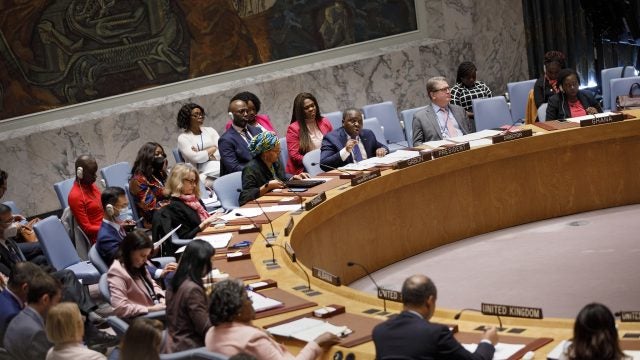Title: Taking al Qaeda Seriously in Afghanistan: Policy Options for the United States
Despite limited numerical strength, al Qaeda exercises sufficient leverage over contending Taliban factions and continues to cultivate an enduring interest in attacking U.S.-led forces in Afghanistan. To break the al Qaeda-Taliban nexus, Washington must upgrade its verification metrics, and initiate COVID-19 recovery assistance that limits al Qaeda’s influence-building in Afghanistan.
Ever since the United States and Taliban insurgents struck a landmark peace deal in Doha this February, Washington has conditioned post-withdrawal stability in Afghanistan on the Taliban’s determination to become nonviolent. The group was removed from power in 2001 and has since led an insurgency against the Afghan government in an attempt to revive its lost Islamic emirate. The United States has tested the insurgents with reduction-in-violence pledges, a recognized stake in highly-anticipated government talks, and modified troop withdrawals to deter any full-blown offensive against Afghan civilians and security forces. However, the logistical strength that affords the Taliban its recourse to violence stems moderately from al Qaeda. al Qaeda’s demonstrated sway over contending insurgent factions makes it a central figure in the Taliban’s peace-deal thinking and a powerful supplier of operative strength in key US coalition attacks. Below-the-radar numbers ensure an easy redistribution of Taliban-al Qaeda influence across approximately one-third of Afghanistan. This creates fertile ground to recruit former Afghan officials and challenge American assumptions about post-withdrawal peace. Hence, Washington must focus its attention on al Qaeda’s logistical and operative strengths to make future gains against the Taliban in Afghanistan.
In the past sixteen months, al Qaeda has assumed the vital role of placating Taliban factions that either favor the peace deal or vehemently oppose it. More than half-a-dozen attempts at shuttle diplomacy—mediation between contending Taliban factions—have earned al Qaeda credit with active foreign terrorist fighters. The Taliban and al Qaeda’s shared skepticism of the Trump administration has also afforded the latter leverage with groups such as Hizb-i Vilayet Islami. Islami is a collection of senior Taliban dissidents that relinquished their opposition to the peace deal during al Qaeda talks. A June interview with Kenneth McKenzie, commander of the US Central Command, confirmed that Washington’s goal of pitting the Taliban against al Qaeda would not eliminate their shared propensity to target US interests. The 2019 Bagram Airbase attack is a glaring example in this regard. It featured al Qaeda operatives in lead roles against US-led coalition forces—an attack publicly claimed by the Taliban. Statements from Afghan intelligence in July—backed by independent Pentagon assessments—confirm that the Taliban continues to coordinate attacks in conjunction with the al Qaeda network.
Washington’s current strategic rationale for discounting al Qaeda as a formidable threat is based on numerical and operational considerations. US Secretary of State Mike Pompeo said in a March interview, “al Qaeda is a shadow of its former self,” endorsing President Trump’s view that the Taliban’s stated commitment to upholding peace will help rein in al Qaeda operatives. This rationale has its merits, as al Qaeda’s operational strength is confined to triple digits with complete dependence on Taliban protection. However, it incorrectly implies that the outfit needs decades-old fighter influence to match US interests. By living in the Taliban’s shadows, al Qaeda has observed the costs of establishing an Islamic emirate by force and using violence as an instrument to win-over public support. Despite substantial growth in its control over Afghanistan, the Taliban still find it difficult to maintain influence without a political settlement. There is little chance for al Qaeda to regain lost ground and conduct large-scale attacks against US troops and coalition forces.
Instead, al Qaeda appears content to play the role of a practiced interlocutor for both the Afghan Taliban and its brutal cross-border offshoot, the Haqqani Network. It capitalizes on this niche by vetting the Taliban’s peace-deal motivations on the group’s behalf, providing religious and military council to emerging ranks, and cultivating an enduring interest in attacking US-led forces across insurgent networks. The fact that several South Asian jihadist groups have begun to commit fresh combatants to Afghanistan suggests al Qaeda’s anti-US groundwork is gaining traction.
It is against this backdrop that even 400 to 600 armed al Qaeda operatives on the ground can severely complicate Washington’s post-withdrawal peace aspirations in Afghanistan. The United States can overcome this reality by publicizing verification metrics that it believes ensure the Taliban’s actions are in line with countering al Qaeda. At present, Washington simply relies on the Taliban to cut its ties with al Qaeda. The new verification metrics should follow a threefold criterion: frequency, timing, and tactical disclosure. If the frequency of Taliban attacks increases with each US troop reduction, Washington must condition further progress on reining in al Qaeda operatives. Subsequently, the US government should consider declassifying its established “monitoring mechanism” that helps determine Taliban’s progress against al Qaeda. By going public, Washington empowers the US Central Command to facilitate reports on specific al Qaeda activities, ramping up public pressure on the Taliban. Lastly, the intelligence used to determine al Qaeda’s sustained presence in Afghanistan must be tactically communicated to NATO allies and the Afghan government. This helps accommodate Washington’s strategic thinking within the broader framework of an Afghan-led, Afghan-owned peace process—the stated will of US allies.
The United States took care of the groundwork in February when Taliban insurgents committed to severing ties with international terrorist groups. Communicating the commitment’s enforcement logic would help curb skepticism from the Afghan government, which has rejected recent US assessments on Taliban-led operations, and prompted certain NATO allies to limit their optimism as well.
There are also economic pathways to countering al Qaeda’s influence building. For instance, the number of Afghan security officials defecting to the Taliban has increased, with several new recruits traced to provinces in border proximity to al Qaeda hideouts. These regions represent some of the lowest literate labor force concentrations when measured against conflict severity, and constitute several of the highest food poverty rates in the country. Hence, the absence of sufficient US development assistance to Afghanistan continues to exacerbate rural suffering in key Taliban hotbeds, making local recruits and native Afghan officials more inclined towards defection and desertion. There is a wide body of research to establish that the withholding of critical security, reconstruction and reintegration funds can end up accelerating these defections. One such report published by the RAND Corporation this year notes, “any abrupt decline [in funding for Afghan reintegration programs] could doom not just the DDR [Disarmament, Demobilization and Reintegration] process but the entire peace process.” Washington should immediately revise its billion-dollar aid cuts to Afghanistan and initiate COVID-19 recovery assistance that addresses the country’s rampant poverty rates, low human capital investment, and declining support for social protection during COVID-19. Evidence from al Qaeda’s Africa affiliates shows that a lack of sufficient assistance during COVID-19 has helped accelerate al Qaeda’s influence-building.
Therefore, it is in Washington’s interests to evolve its threat assessment metrics and avoid evaluating the al Qaeda challenge in retrospect. Instead, it should demonstrate specific focus on the group’s logistical transitions, prioritize tactical disclosure of US-Taliban verification metrics, and offer a renewed commitment to Afghanistan’s socioeconomic build-up to effect some deterrence against al Qaeda’s low-profile maneuvers. Based on current trends, it is clear that trusting the Taliban to move against their ideological counterparts will only solidify the alliance.
. . .
Hannan Hussain is an Assistant Researcher at the Islamabad Policy Research Institute, and an author. A recipient of the Fulbright award, Hannan’s writings on international affairs have been published in The Fletcher Forum of World Affairs, Cornell Policy Review, and The Express Tribune (partner of The International New York Times).
Recommended Articles

This article explores the uncertain future of Arctic governance amid shifting global geopolitics. It argues that whether Washington and Moscow opt for confrontation or cooperation, multilateralism in the Arctic…

Twenty-five years ago, the United Nations Security Council adopted Resolution 1325, establishing a framework that underpins the Women, Peace, and Security (WPS) Agenda. The Resolution recognized both the…

When we analyze conflicts in the Middle East, we are not analyzing conflicts with isolated impacts but risks for global energy security. Recent conflicts in the Middle East have highlighted…